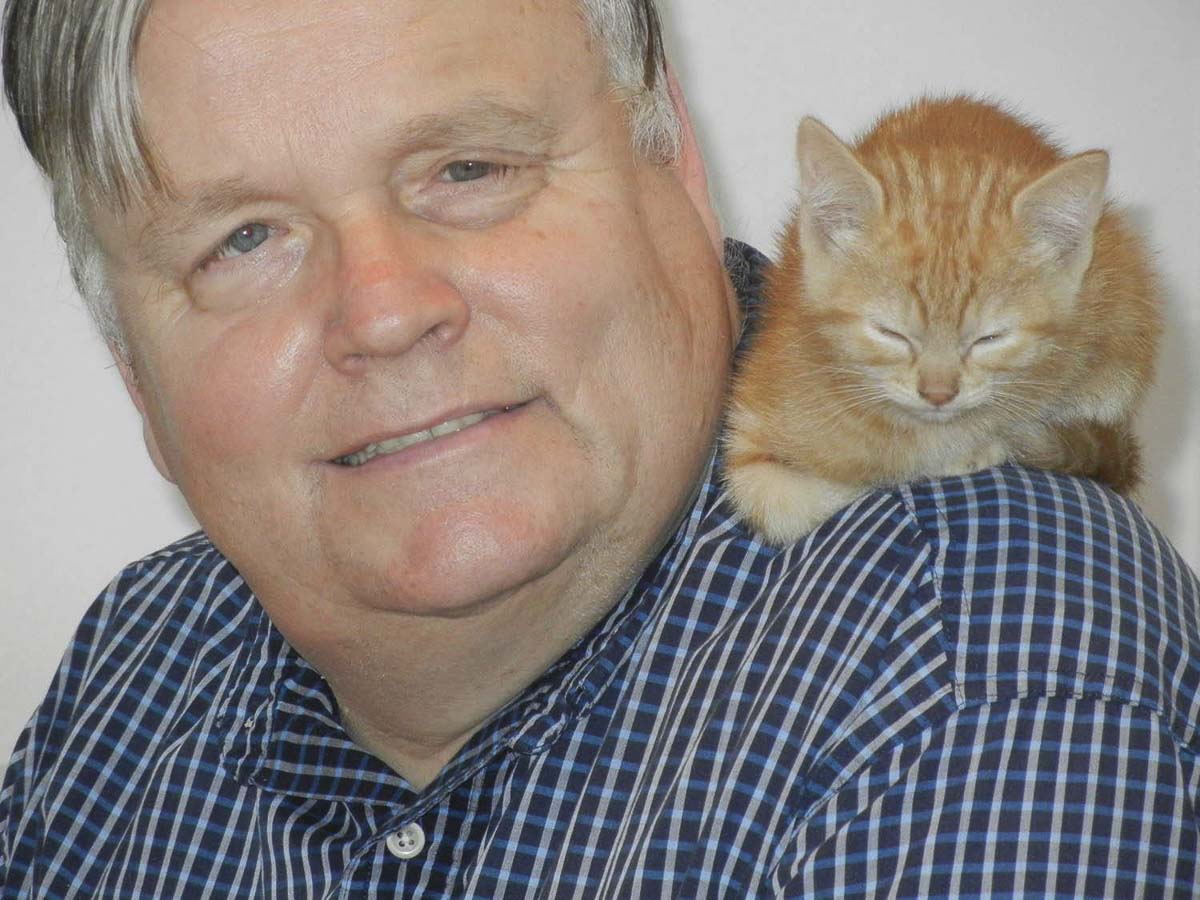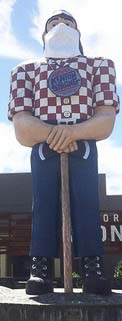Vancouver resident Dan Tolva shares his thoughts on the times through his amusement of Portland’s Paul Bunyan statue
Editor’s note: Opinions expressed in this column are those of the author alone and do not reflect the editorial position of ClarkCountyToday.com
By DAN TOLVA
Ever since I was a kid, I’ve been amused and entertained every time I passed a big statue that stands alongside what used to be the main drag between Vancouver and Portland.

My two sisters and I would always crane our necks as we motored down Highway 99, or Interstate, to get a peek at ax-toting Paul Bunyan, a legendary lumberjack.
The brightly colored figure was built in 1959 to commemorate the centennial of Oregon’s statehood. Oregon’s long history of logging made Bunyan a natural and fun symbol.
The 31-foot tall figure has been refurbished several times and moved once to accommodate a light-rail project. The local Kenton Neighborhood Association is in charge of keeping Paul all spiffed up, according to an article from the National Trust for Historic Preservation.
I took a picture of Paul today, and you can see it below. Note his face mask, a very sensible precaution in the face of the coronavirus pandemic. Why one sneeze from that big goon could wipe out half of North Portland.
(For details, visit: history of paul bunyan statue in portland.)
The original “Tall Paul” was one of several mythical American characters, including Pecos Bill and John Henry, all imbued with superpowers and a good-natured braggadocio. They preceded Spider-Man by almost a century, and came with none of the emotional and psychological angst of many of today’s superheroes.
Long before Paul was popularized in a 1916 promotional pamphlet for the Red River Lumber Company, tales of him and his merry band of lumberjacks were being told in lumber camps for at least 40 years.
I grew up reading about Paul Bunyan and seeing his exploits in a Walt Disney TV show. Here are the stories I remember:
Paul Bunyan was born on the shores of the Bay of Fundy in Maine. The bouncing baby behemoth was so big that his cradle had to be placed in the bay, where its rocking created the massive tides the bay is famous for today.
When it came time to cook flapjacks on the Bunyan logging camp’s expansive griddle, lumberjacks would strap sides of bacon to their feet and skate back and forth on the huge iron to get it properly greased up.
One day Paul was walking along, dragging his huge ax. The resulting furrow is called the Grand Canyon these days.
Then there was the time Paul was wrestling with his trusty companion, Babe the Blue Ox. Their seismometer-shaking horseplay (or oxplay?) hedged up enough boulders and dirt to create the Rocky Mountains.
Babe, by the way, measured 42 ax handles between the eyes. That promises a lot of oxtail soup.
I gotta admit, I was inspired to write this post by another post, this from the Bob Miller Show. It showed a couple of armed men guarding a statue of Yogi Bear, a tongue-in-cheek response to the damage and vandalism being done to statues of real-life figures in American history.
At least, I hope it was tongue-in-cheek.
Dan Tolva retired from The Columbian in 2009 after nearly 37 years as a reporter and editor. He is the author of “Unlimited Visibility: A History of the Washington State School for the Blind;”
an autobiography, “The Possible Life;” “Politics, Religion and Other Stuff … We’re Not Supposed to Discuss in Polite Society;” “Drawing Power,” a collection of his artwork; and “What’s a Joint Like This Doing in a Nice Girl Like You,” the story of his wife’s knee-replacement surgery. All his books are available on Amazon.com.





